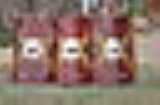
Glenblocker fort
Encyclopedia
The term, Glenblocker fort, sometimes also called the Highland line fort is used to describe members of a line of Roman forts along the Highland Line in Scotland
. The forts all share the common characteristic that they are close to the mouth of a glen (a narrow valley) or a strath (a broad valley) and can thus supervise traffic.
All of the forts were originally built during the Flavian occupation in Scotland. The group consists of
It is debatable, whether Cardean, Stracathro
and Doune should be listed among these, as they are sited further away from their respective traffic corridors, but fulfill the same function.
It has traditionally been thought that these forts were meant to prevent invasions out of the Scottish Highand into Roman held territory.
This is ultimately probably their aim, but they were never meant to operate in isolation but in cooperation with the other forts on the Gask Ridge
and along Strathmore
, as only the legionary fortress of Inchtuthil
with 5000-6000 soldiers would have been strong enough to deal with a major incursions. The smaller forts are more likely to serve as a disincentive to small scale raiding parties etc.,
Scotland
Scotland is a country that is part of the United Kingdom. Occupying the northern third of the island of Great Britain, it shares a border with England to the south and is bounded by the North Sea to the east, the Atlantic Ocean to the north and west, and the North Channel and Irish Sea to the...
. The forts all share the common characteristic that they are close to the mouth of a glen (a narrow valley) or a strath (a broad valley) and can thus supervise traffic.
All of the forts were originally built during the Flavian occupation in Scotland. The group consists of
- Drumquhassle (near Drymen) overlooking the southern end of Loch Lomond and the road back to the Clyde).
- Malling (on the Lake of Menteith, overlooking the access to the Duke's Pass and a narrow point between the mountains and the Forth Mosses)
- Bochastle (near Callendar), overlooking the road to Loch Katrine and the Pass of Leny
- Dalginross (near Comrie) overlooking the Eastern end of Loch Earn
- Fendoch (north of Crieff) overlooking the Sma' Glen
- InchtuthilInchtuthilInchtuthil is the site of a Roman legionary fortress situated on a natural platform overlooking the north bank of the River Tay southwest of Blairgowrie, Perth and Kinross, Scotland.It was built in 82 or 83 AD as the advance headquarters for the forces of governor Gnaeus Julius...
, (below Dunkeld) The legionary fortress at the mouth of Strath Tay, guarding the main roads to Inverness - Inverquharity (near Kirriemuir) a fortlet-sized station at the east end of Glen Clova
It is debatable, whether Cardean, Stracathro
Stracathro
Stracathro is a small place in Angus, Scotland,-Location:Stracathro is located 2½ miles southeast of Edzell in NE Angus. It lies to the northeast of Brechin on the A90.-History:...
and Doune should be listed among these, as they are sited further away from their respective traffic corridors, but fulfill the same function.
It has traditionally been thought that these forts were meant to prevent invasions out of the Scottish Highand into Roman held territory.
This is ultimately probably their aim, but they were never meant to operate in isolation but in cooperation with the other forts on the Gask Ridge
Gask Ridge
The Gask Ridge is the modern name given to an early series of fortifications, built by the Romans in Scotland, close to the Highland Line.-Name:...
and along Strathmore
Strathmore
Strathmore, from the Scottish Gaelic for large valley , can refer to a number of people, places in Scotland, or places named by Scottish emigrants:-Buildings:...
, as only the legionary fortress of Inchtuthil
Inchtuthil
Inchtuthil is the site of a Roman legionary fortress situated on a natural platform overlooking the north bank of the River Tay southwest of Blairgowrie, Perth and Kinross, Scotland.It was built in 82 or 83 AD as the advance headquarters for the forces of governor Gnaeus Julius...
with 5000-6000 soldiers would have been strong enough to deal with a major incursions. The smaller forts are more likely to serve as a disincentive to small scale raiding parties etc.,

